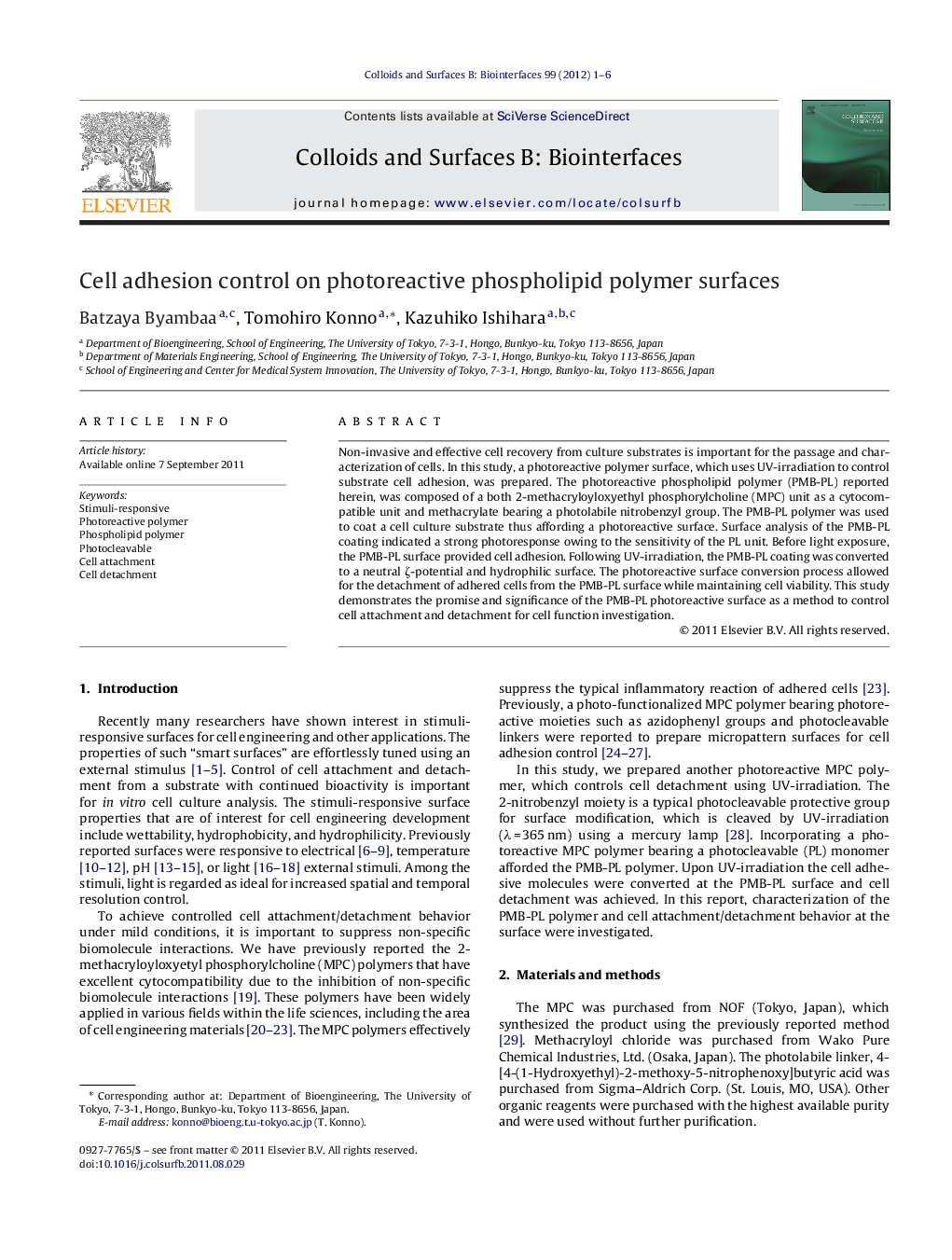| Article ID | Journal | Published Year | Pages | File Type |
|---|---|---|---|---|
| 600593 | Colloids and Surfaces B: Biointerfaces | 2012 | 6 Pages |
Non-invasive and effective cell recovery from culture substrates is important for the passage and characterization of cells. In this study, a photoreactive polymer surface, which uses UV-irradiation to control substrate cell adhesion, was prepared. The photoreactive phospholipid polymer (PMB-PL) reported herein, was composed of a both 2-methacryloyloxyethyl phosphorylcholine (MPC) unit as a cytocompatible unit and methacrylate bearing a photolabile nitrobenzyl group. The PMB-PL polymer was used to coat a cell culture substrate thus affording a photoreactive surface. Surface analysis of the PMB-PL coating indicated a strong photoresponse owing to the sensitivity of the PL unit. Before light exposure, the PMB-PL surface provided cell adhesion. Following UV-irradiation, the PMB-PL coating was converted to a neutral ζ-potential and hydrophilic surface. The photoreactive surface conversion process allowed for the detachment of adhered cells from the PMB-PL surface while maintaining cell viability. This study demonstrates the promise and significance of the PMB-PL photoreactive surface as a method to control cell attachment and detachment for cell function investigation.
Graphical abstractFigure optionsDownload full-size imageDownload as PowerPoint slideHighlights► We describe a photoreactive phospholipid polymer to control cell attachment/detachment using with photoirradiation process. ► The phospholipid polymer bearing photocleavable property was synthesized, and the characterization of the polymers was described. ► We found that the photocleavable phospholipid polymer surface can induce the cell attachment, and the attached cells could recover by photoirradiation without any reduction of their viability.
